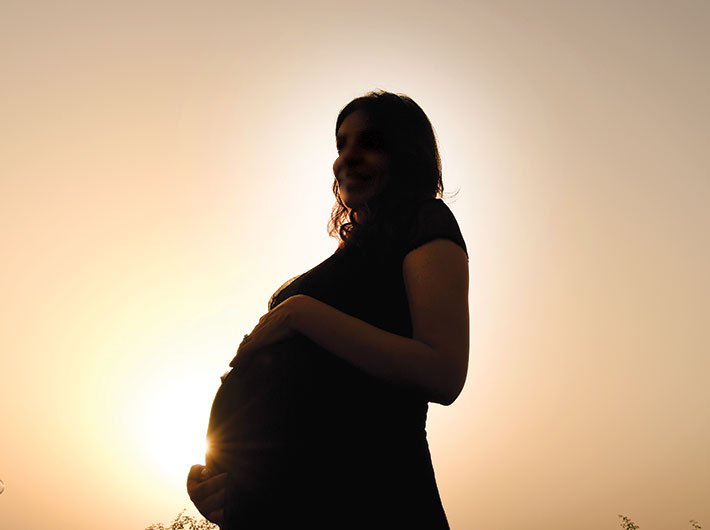The incidence of gestational diabetes in India varies from 10 percent pregnant women in rural areas to 30 percent in urban areas. Unfortunately, only a small proportion are diagnosed and provided care
Five years ago Promila Raj (name changed), a software professional, shifted from Pune to Bengaluru along with her husband. When the hectic life in the cyber city – unhealthy food habits, little physical exercise – was taking its toll on her health, Promila got pregnant with her first child. It was the start of celebrations for her, but it didn’t last long. Within six weeks of her pregnancy, she was diagnosed with diabetes, and in the 20th week, she suffered a miscarriage.
Promila had inherited diabetes from her father. Though she knew earlier that she had high chance of getting the disease, she had never bothered to go for a test. She said that even though she followed her gynaecologist’s advice, it was probably too late to save the baby because of the late diagnosis.
“My blood sugar level was more than 200mg/dl. My doctor advised me to take insulin thrice a day. It was physically tiring. However, I felt that the doctor was cool about my pregnancy and never raised an alarm,” she said.
What Promila, and probably her doctor too, didn’t know was that she was suffering from gestational diabetes mellitus (GDM), a disease that is prevalent among over 30 lakh women in India. It manifests itself when a pregnant woman’s body is unable to produce more than normal levels of insulin – the hormone responsible for synthesising sugar and keeping it at a desirable level. A woman with GDM may have an oversized baby and therefore a difficult delivery. The condition can lead to miscarriage, abortion, stillbirth or pre-term birth. Often, the child born to a GDM-affected mother develops respiratory distress and hypoglycemia (low blood sugar) requiring intensive care for survival.
A year later, Promila delivered a healthy baby, thanks to all the guidance from her obstetrician-gynaecologist. “Dr Hema Divakar asked me to stop insulin during the first three months and also take vitamin D supplements,” said Promila.
“I realised that I didn’t get proper guidance during my first pregnancy. This time, I realised how important it is to treat a diabetic pregnant woman differently than a non-diabetic one. I suppose that kind of knowledge and sensitivity is lacking in our healthcare system,” Promila said.
Throughout her pregnancy, Promila was in constant touch with her doctor through a mobile app. She would everyday send the reading of her glucometer – the gadget for checking sugar level in blood – to the doctor. The doctor would respond and guide her.
Dramatic numbers
The GDM numbers are startling. A recent survey by the Asian Research and Training Institute for Skill Transfer (ARTIST) reveals that about 10 percent or about 30 lakh pregnant women in India develop GDM each year. Nearly one-third of them have higher chances of developing type-2 diabetes in the next five to 10 years.
The International Diabetes Federation (IDF), a global policy think tank on the dreaded disease, in its 2015 report said that India has about seven crore people with diabetes. Half of them have pre-diabetes – that is, the condition when blood sugar is high but not high enough to be type-2 diabetes. These people are highly vulnerable to type-2 diabetes. By 2040, India will have to deal with 12.5 crore diabetics and 6.5 crore pre-diabetics. More worrisome is the fact that over half of those afflicted remain undiagnosed till complications set in.
Again, ARTIST points out the grim reality of GDM in India. As per its survey in 2013, half of all women with GDM live in rural areas with scarce healthcare.
Dr Dinesh Baswal, deputy commissioner, maternal health, national programme on prevention and control of diabetes in India, admitted to the rising numbers of GDM. “That is why the ministry of health framed a set of guidelines in 2014 and circulated it the same year. The implementation, however, has started this year,” he told Governance Now.
Why did it take a whole year? He said, “There are so many other issues [of health] which were of primary importance. Different states have different sets of problems. We have to deal with so many things at once. We framed the guidelines on GDM once we realised the problem needs to be tackled immediately.”
Dr Baswal said that the government is trying to reach out to women in districts which have a low detection of GDM. To begin with, he said a group of healthcare workers have been sent to a few districts in Madhya Pradesh. Gradually, he said, the government intends to cover all districts. “These things take time.”
As per the new guidelines on detection of GDM, all pregnant women have to take a test for diabetes. Earlier, only a few selected women would be asked to take the test.
Also, there is change in the way a pregnant woman would take this test as against repeated tests to ascertain abnormal sugar levels. Now, women have to undergo just one test which is completed in two hours, and repeated as a confirmatory test once anytime between the 24th and 36th week of pregnancy.
Dr Divakar, who also heads the Federation of Obstetric and Gynaecological Societies of India (FOGSI) and played a key role in framing the guidelines for GDM, said that the one-step test was long overdue. “We could have saved ourselves from a lot of trouble if this was implemented earlier.” Dr Divakar, however, admits that Indian doctors were earlier following the international guidelines for GDM. “This was a big failure for our country.”
Dr Divakar explained that under this regime, pregnant women with diabetes were repeatedly required to visit a clinic for the blood sugar test. “A survey done on such women showed that after the first test, only seven percent returned to take the second one,” she said.
"Accessibility is an issue with Indians. We can’t ask a pregnant woman to turn up again and again for some tests. It is obvious she will avoid it. Thus we suggested to the government to introduce one-step testing. However, the problem is in implementation. We have issued new guidelines and new testing methods, but are the people and the doctors everywhere aware of it? Are they being trained?” asked Dr Divakar.
She said that notwithstanding the guidelines, awareness levels are low and the capacity within the healthcare system for testing and providing care on GDM is a cause for concern.
“Can you believe our country has only 1,000 diabetologists? The number is extremely low. We need more trained professionals. GDM is a silent problem in India which can no longer be buried under the carpet,” she said.
She said that most women are still not routinely tested for GDM. “It is very much possible that a sizeable proportion of cases of poor maternal and new-born outcomes maybe a consequence of undetected GDM, thus contributing to the high maternal and newborn morbidity and mortality,” she said.
Dr Divakar said the impact of GDM on women is scary. She said a woman with GDM has five times higher risk of developing type-2 diabetes five years after her pregnancy, and nine times thereafter. Almost two-thirds of women with GDM develop type-2 diabetes within 10 years. There are linkages between premenopausal heart disease and GDM. A number of organisations working on the healthcare policy have requested union health minister JP Nadda to declare March 10 as a national GDM awareness day.
Dr Ritesh Gupta, diabetologist at Fortis hospital, New Delhi, said, “There is negligence [on GDM] from both the government and the people. And negligence arises from the fact that there is no awareness; no media reportage on GDM. How will people come to know about what the problem is and how serious it is?”
Fighting the odds
However, fighting GDM is not as easy as it seems. Dr V Seshiah, chair, Diabetes in Pregnancy Study Group of India (DIPSI), admitted that doctors have to face some practical problems in diagnosing GDM. “All diagnostic criteria require women to be in the fasting state, but most of the time, pregnant women do not come for antenatal check-up in the fasting state because they believe that fasting for long hours during pregnancy is not good. Even if the woman comes in the fasting state, it is often not feasible to collect samples early due to clinic timings, causing discomfort and inconvenience,” he said. Dr Anil Bhoraskar, chair of Southeast Asia, International Diabetes Federation (IDF) and scientific secretary of Diabetic Association of India (DAI), said, "Diabetes in our country happens a decade earlier. In India, we have different set of problems, where nutrition [is low in priority]. There is a need to educate children in their initial years. Pregnant women here are fed laddoos and what not. Their eating habits become worse during pregnancy when it should be otherwise.”
sakshi@governancenow.com
(The article appears in July 1-15, 2016 edition of Governance Now)

